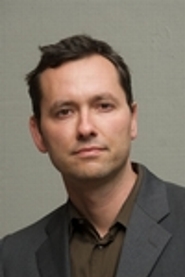
Africa is the continent that consistently lags behind the others in levels of economic development and public health—two major indicators of standard of living. Africa’s per capita income growth was negative between 1970 and 2000 (though it has recently recovered slightly), and many expert economists have been left puzzled on how to help. There have been a fair share of radical suggestions: quadrupling foreign aid, increasing foreign military intervention to handle corruption, and one economist even recommended a de facto return to colonialism by creating “charter cities” in Africa for wealthy nations to inhabit and build up.
In a lecture on April 6, Ted Miguel presented evidence from his own research suggesting that the most cost-effective proactive step to take in solving Africa’s economic problem is treating tropical disease in schoolchildren. Miguel is professor of economics and director of the Center of Evaluation for Global Action at the University of California, Berkeley. His talk was part of the Levitt Center Series on Inequality and Equity.
The big question that Miguel is seeking to answer is whether child health investments lead to better standards of living in adulthood. Despite the importance of the question, much less is known than one might expect, mostly for tricky methodological problems. For example, it is difficult to isolate the variable of childhood health investments when there are so many other variables—eating habits, education, income—that presumably affect adulthood standards of living. Second, in order to decisively record the affects of child health investments, a study needs to span several decades and researchers must maintain contact with adults who received disease treatment as a child. In the late 1990s, when Miguel set out to do his research, there were no studies that had attempted to do this.
For his research, Miguel looked at gastrointestinal worm infections in rural Kenya. Worm infections are globally prevalent (one in four people is thought to be infected), but especially common among children in sub-Saharan Africa. While they are not often fatal, they have a number of long-term adverse side effects, such as development of anemia and stunted growth, and permanently weaken the immune system.
Miguel and his team of researchers contacted an NGO that was distributing deworming medication in 75 primary schools in western Kenya and convinced them to distribute the medication randomly to 25 schools at a time. Miguel divided the schools into subsets based on when the medication was distributed: group one (1998-2003), group 2 (1999-2003), and group 3 (2001-2003). The random, staggered distribution was an essential component of the study because it allowed the researchers to monitor the medication’s effects on a treatment group (groups one and two) and a control group (group 3).
The medication worked wonders, cutting the infection rate by 50 percent almost immediately. The most impressive results, though, were the unexpected ones. Schools in the treatment group saw a drop in absenteeism by 7.5 percent, and even students who did not receive the treatment themselves were predominantly healthier because the children whom they were around were healthier. In one instance, a control group surrounded by three treatment groups saw a reduction in its control rate, as the worms were no longer spreading from one school to another.
The second half of Miguel’s study took place between 2007 and 2009, when 7,530 of the original 33,000 individuals were tracked down and surveyed in an attempt to measure the long-term effects of the medical treatment. What he found was that members of the treatment group were staying in school longer, working longer hours for higher wages, had higher self-reported health, and were missing fewer work days due to illness.
The benefits of the medical treatment in labor market earnings, Miguel found, far outweigh the costs (the deworming medication costs less than a dollar per year per pupil). Miguel estimates that the ratio of benefits to costs is 25:1, a much higher ratio than he had originally anticipated, and the study isn’t even over. Time will tell, but Miguel surmises that members of the treatment group will make more money over time, raise healthier families, and live longer lives.
The Kenyan government recently undertook a national initiative to treat 3.6 million children with deworming medication. The program is expected to have huge long-term economic payoffs with a minimal cost. While Miguel notes that the benefits will only begin to close the gap in standard of living between rural Kenyans and the rest of the developed world, the payoffs are easily seen and felt on a local level and this type of initiative could be the first of many programs to battle.
This presentation was made possible through support from the Arthur Coleman Tuggle Lecture Fund.
